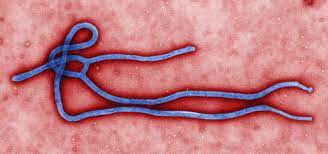A recent meta-analysis has uncovered significant variations in the prevalence of nonsuicidal self-injury (NSSI) among adolescents across different regions and genders. The study, led by Dr. Fiona Moloney from the University of Toronto, analyzed data from 38 studies encompassing 266,491 participants to better understand how NSSI manifests globally.
Key Findings
The research revealed that NSSI is twice as prevalent among female teenagers in North America and Europe compared to their male counterparts. However, this gender disparity was not observed in Asia, where male adolescents exhibited a higher prevalence of NSSI than in other regions.
NSSI is characterized as the deliberate self-inflicted destruction of body tissue without suicidal intent and for non-culturally sanctioned purposes. The overall pooled prevalence of NSSI across 17 countries was found to be 17.7%, with significant regional and gender differences:
- North America: Odds Ratio (OR) for female vs. male adolescents: 2.49 (95% CI, 2.16-2.86)
- Europe: OR for female vs. male adolescents: 2.08 (95% CI, 1.69-2.58)
- Asia: OR for female vs. male adolescents: 1.00 (95% CI, 0.71-1.41)
Dr. Rachel H.B. Mitchell, senior author of the study, emphasized the importance of recognizing these differences to tailor interventions effectively. “Our study indicates that NSSI may not be the same experience for teenagers everywhere. The triggers, purposes, or influences could vary significantly based on sex and geographic location,” she stated.
Implications for Intervention
The study’s findings highlight the need for more research to understand the underlying factors contributing to these regional and gender-specific variations in NSSI. Dr. Mitchell pointed out that understanding these differences is crucial for developing effective interventions and guiding suicide prevention efforts. Although NSSI is nonsuicidal by definition, it is a known predictor of later suicide attempts.
Editorial Insights
In an accompanying editorial, Dr. Ellen-ge Denton and Dr. Kiara Alvarez proposed several approaches to address the global risk of NSSI. They suggested leveraging media and social media platforms to identify at-risk individuals and implement prevention strategies. They also recommended working with media companies to promote healthy reporting on cyberbullying, resilient life skills, and the removal of content depicting self-harm.
Dr. Scott McLeod from the University of Calgary emphasized the need to explore NSSI in the transgender population to design relevant interventions. “Understanding more about the regional and cultural factors socializing NSSI can ensure that interventions are appropriately designed,” he noted.
Expert Opinions
Dr. Simon B. Sherry from Dalhousie University commented on the higher likelihood of female adolescents engaging in NSSI. “The stark contrast suggests some factors particularly distressing to young women, such as self-image issues, mental disorders like depression and anxiety, or adverse childhood experiences,” he explained. He also highlighted the availability of effective treatments like dialectical behavioral therapy for those struggling with self-injury.
The study was published in JAMA Network Open and supported by various institutions, including the University of Toronto and Sunnybrook Health Sciences Centre. Dr. Mitchell disclosed financial relationships with several organizations, while Dr. McLeod and Dr. Sherry reported no relevant financial relationships.
This research underscores the complex and multifaceted nature of NSSI among adolescents, calling for nuanced and region-specific approaches to prevention and intervention.












